December 14. DARJEELING "The Little Train that Still Can" When we were a couple of days away from leaving for Sikkim we decided that we should really take a ride on Darjeeling's Toy Train. On the off chance we didn't come back through Darjeeling it was one thing we would really regret not doing. The Darjeeling Himalayan Railway, a.k.a. the toy train, was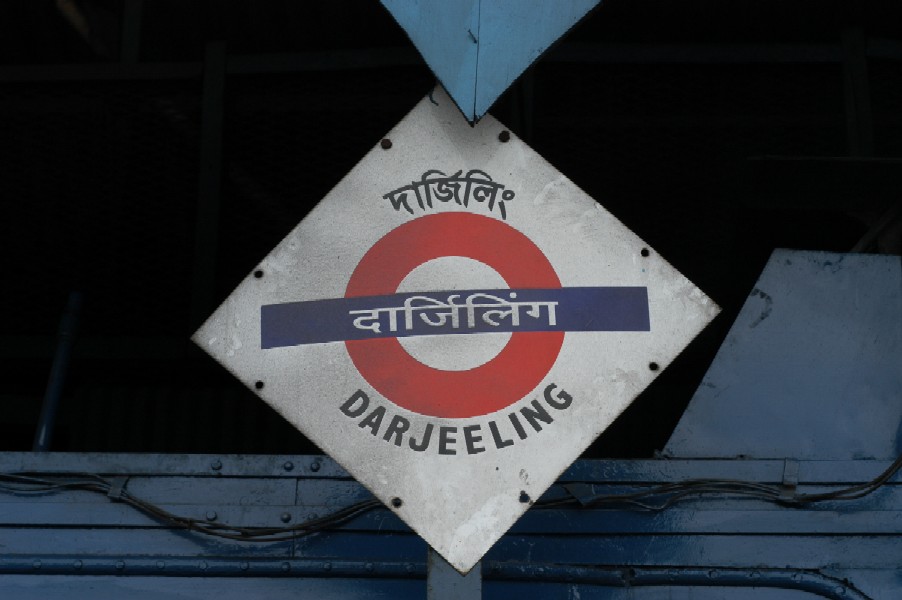 completed in 1881 as an extension of the North Bengal State Railway. The small train operates on 2ft wide tracks for 88 km from NJP to Darjeeling, running alongside Hill Cart Road for much of the way but occasionally veering off to make a loop or using zigzags (called z-reverses) to more effectively change elevation. Jeeps are a much faster alternative to the train so it isn't an essential mode of transportation anymore but it received UNESCO World Heritage Status in 1999 and is an inseparable part of the Darjeeling experience. completed in 1881 as an extension of the North Bengal State Railway. The small train operates on 2ft wide tracks for 88 km from NJP to Darjeeling, running alongside Hill Cart Road for much of the way but occasionally veering off to make a loop or using zigzags (called z-reverses) to more effectively change elevation. Jeeps are a much faster alternative to the train so it isn't an essential mode of transportation anymore but it received UNESCO World Heritage Status in 1999 and is an inseparable part of the Darjeeling experience.
The old steam engines are no longer used for the long haul trips down to NJP and Siliguri but they are revived every day for the "joy-ride" trip from Darjeeling to Ghoom, a distance of 7 km. The seats for the joy ride are all first class and are limited to about 25 people. We arrived early to watch the steam engine get prepared and attach to the passenger cars. The station used to be in the center of town but with all of the congestion they moved it to the edge. Some of the tracks still extended past th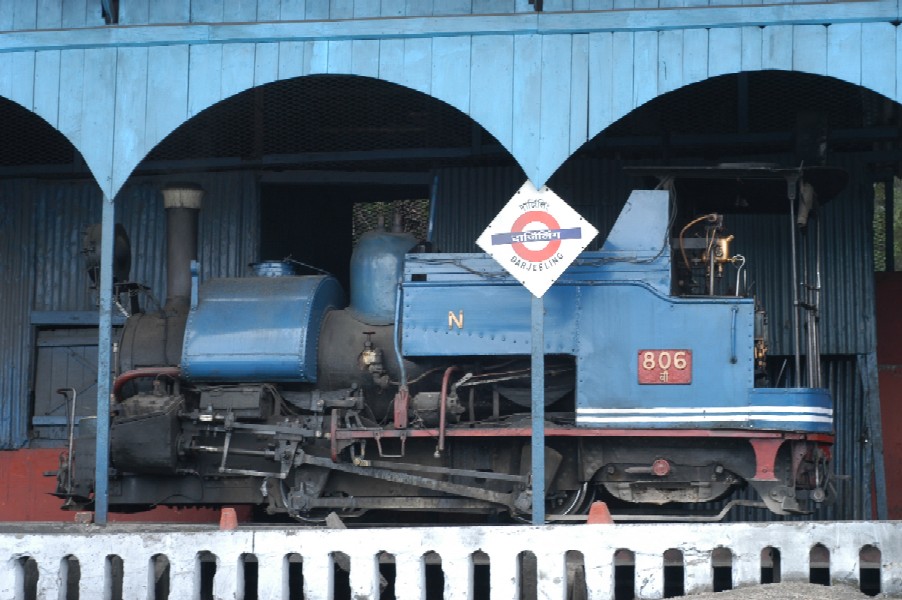 e station but they were being paved over while we were there. The "new" station had a kind of retro style, adding to Darjeeling's mélange of architecture. Above one of the platforms a sign read "Welcome to the Most Tourist Friendly Hill Railway of the World. 150 Glorious Years." A small shed across the street housed the old steam engines, less than a third the size of a normal steam engine. It took some time for them to prep the engine, filling it with water and stoking the coals until there were large gusts of steam spewing from the stack. From the shed they chugged the little engine out to a fork in the tracks and then carefully moved it forward to connect with the passenger cars. First class cars were used for the "joy ride" and each had its own name. Ours was called the "Serendip" and the one behind us was called the "Mark Twain". Some of the engines had names as well but ours just had a number, the 806. It was the front of the engine that hooked up to the passenger cars. Initially that seemed strange but it made sense later. e station but they were being paved over while we were there. The "new" station had a kind of retro style, adding to Darjeeling's mélange of architecture. Above one of the platforms a sign read "Welcome to the Most Tourist Friendly Hill Railway of the World. 150 Glorious Years." A small shed across the street housed the old steam engines, less than a third the size of a normal steam engine. It took some time for them to prep the engine, filling it with water and stoking the coals until there were large gusts of steam spewing from the stack. From the shed they chugged the little engine out to a fork in the tracks and then carefully moved it forward to connect with the passenger cars. First class cars were used for the "joy ride" and each had its own name. Ours was called the "Serendip" and the one behind us was called the "Mark Twain". Some of the engines had names as well but ours just had a number, the 806. It was the front of the engine that hooked up to the passenger cars. Initially that seemed strange but it made sense later.
As we pulled out of the station a crowd of people paused to watch. The locals saw the little train go up and down the mountain everyday but it still seemed to be somewhat of an event. The train tracks ran along Hill Cart Road but occasionally crossed from side to side and had to share the road with automobile traffic. We started out of the station on a slight uphill grade but soon came to a slow stop and waited for another train to pass on its return from Ghoom. It was also a steam engine so it must have been returning from a short trip. The diesel engines were used for the long haul trips. The first class cars had plush reclining seats upholstered in a red and gold flower motif but the narrow size meant that there were only three seats across, two together and one by itself. At the back of the car there was even a small toilet, a necessity for those long slow rides down to NJP! Our car was directly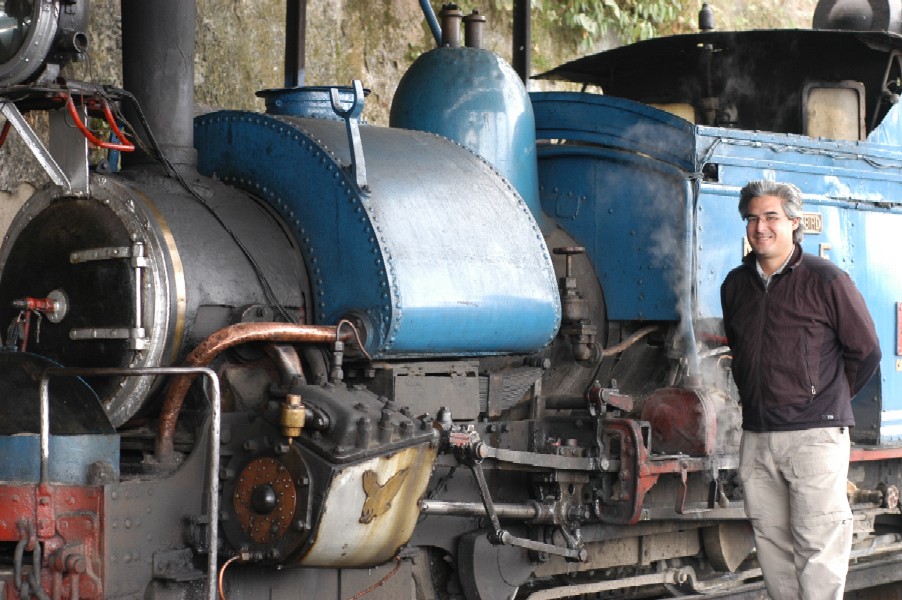 behind the engine which meant we were occasionally engulfed in a cloud of steam but could more easily watch what was happening up front. behind the engine which meant we were occasionally engulfed in a cloud of steam but could more easily watch what was happening up front.
The train moved slowly along Hill Cart road, getting waves from people of all ages as we passed homes and shops. At times the train came very close to the buildings along the road. It would have been dangerous to just stick your head out with looking first. As we passed some stores I could have almost reached out and grabbed one of the items they had stacked out front. As we got close to Ghoom the train started to wind around the large Bastasia Loop, one of three loops along the 88km journey to NJP. There used to be four loops but one had since been straightened out. The loops allowed the trains to change altitude in a shorter distance and the Bastasia Loop had the benefit of sweeping views of the Kangchendzonga mountain range in the distance. Wrapping around a monument to Ghurkha soldiers that stood in the middle of a small park the train slowly came to a stop. We had a ten minute break to get out and take photos. After the Bastasia Loop we passed a few small monasteries and entered the town of Ghoom. The station at Ghoom had a distinctly more colonial look to it. A sign noted that the station was established in 1891 and indicated an elevation of 7407ft up about 600 feet from 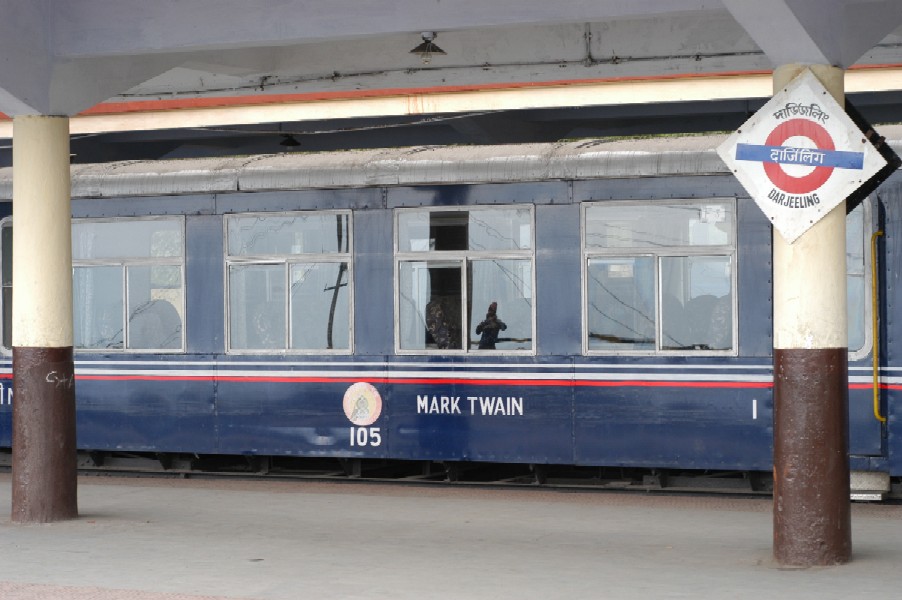 Darjeeling Station (6812 ft). At Ghoom the train made a half hour stop so we could visit the small Darjeeling Himalayan Railway Museum, housed on the second story of the station. Darjeeling Station (6812 ft). At Ghoom the train made a half hour stop so we could visit the small Darjeeling Himalayan Railway Museum, housed on the second story of the station.
The museum was a small gem of steam train history. It wasn't anything fancy but offered some great tidbits and memorabilia. Near the entrance a photocopied piece of paper listed the following facts about of the Darjeeling Himalayan Railway:
1. Total Length - 87.4km (corrected to 80.4km)
2. Gauge - 2 feet (610mm)
3. Total No of Stations - 12
4. Total No of Z-reverses - 6
5. Total No of Loops - 3
6. Total No of Bridges - 456 (corrected to 556)
7. Total No of L-Xing (unmanned) - 153
8. Total No of Curves - 872
9. Total Length on Curves - 59.4 KM
10. Max. Degree of Curvature - 120
Some of the facts were inconsistent with what was printed in other places but it didn't matter. It was still a charming little museum and Ghoom claimed to be the second highest train station in the world. There was a map of the train line and how it once connect to two other 2 foot gauge lines in the region as well as a great photo comparing the little Toy Train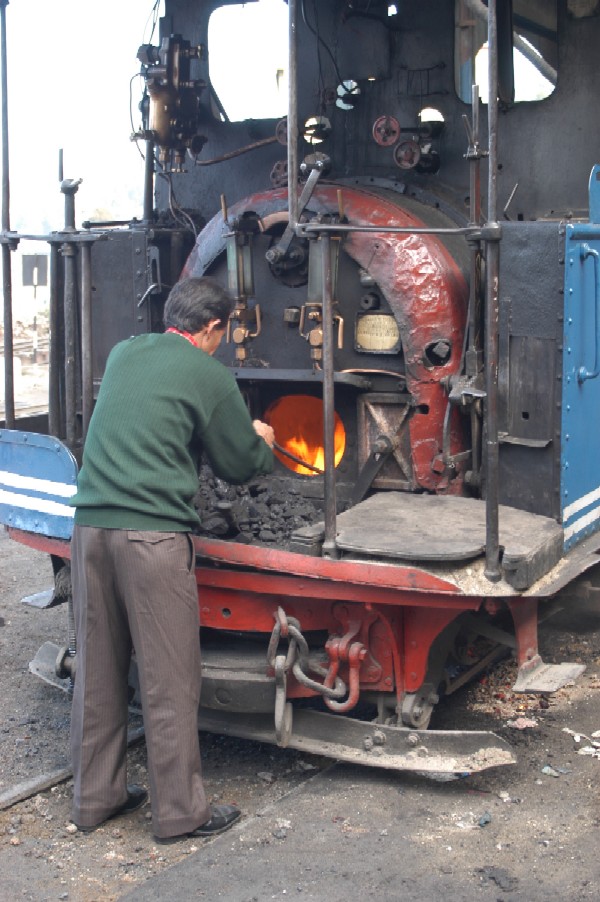 with a full-sized steam locomotive. Across from Ghoom station was a small field of retired trains including one called Baby Sevoke, built in 1881 by M/S Sharp & Steward & Co. Ltd., Glasgow, Scotland. The train was rebuilt in 1999 and brought up to Darjeeling from its home in Siliguri in 2000. with a full-sized steam locomotive. Across from Ghoom station was a small field of retired trains including one called Baby Sevoke, built in 1881 by M/S Sharp & Steward & Co. Ltd., Glasgow, Scotland. The train was rebuilt in 1999 and brought up to Darjeeling from its home in Siliguri in 2000.
While we were touring the museum, our little engine made a solo trip around the back of the station and attached itself to the other end of the passenger cars. This time it was facing forward and now we were in the back car of the train. It was a nice change because we could see more of the train from the back as it navigated the curves. The seats flipped over so we could sit facing forward, except for the last row which we sat facing during the return trip. We didn't make a stop at Ghoom this time and chugged straight back to Darjeeling. We were going downhill this time, which was probably why the little engine had changed directions.
When we reached Darjeeling the train pulled up to the outside platform and let everyone off. Then, leaving the passenger cars behind, the engine chugged forward to a fork in the tracks and returned back by the station on an outside track. It made another switch at the back of the station before pulling forward to park back under the shed. We stayed to watch every last movement. An enthusiastic British family stayed as well. Apparently they planned their holidays around steam train rides and had even been 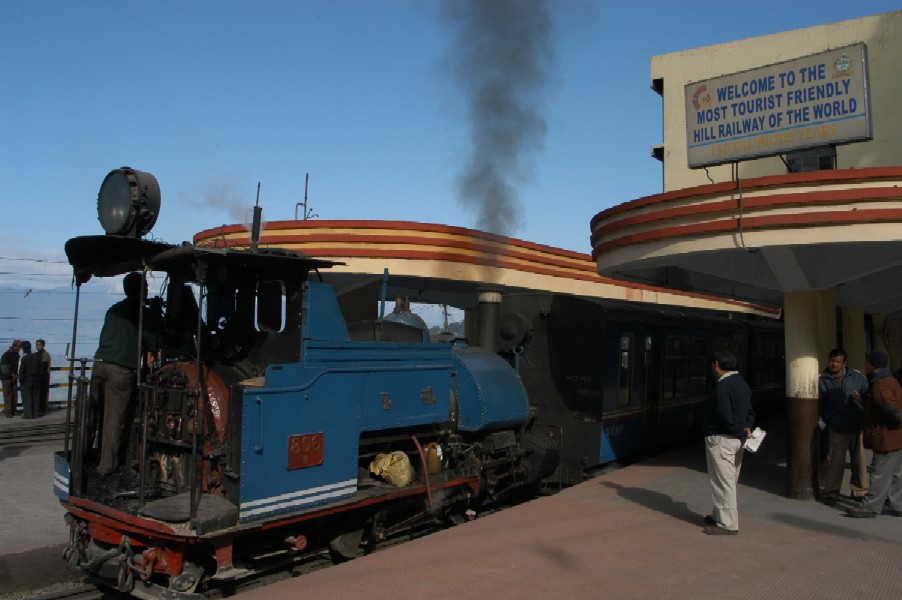 on the old Durango-Silverton line in the U.S! I loved trains as well but I am not sure any will quite ever match the charm and uniqueness of the Darjeeling Himalayan Railway. For more on the Toy Train read about our trip back to Siliguri. on the old Durango-Silverton line in the U.S! I loved trains as well but I am not sure any will quite ever match the charm and uniqueness of the Darjeeling Himalayan Railway. For more on the Toy Train read about our trip back to Siliguri.
* * *
The Toy Train experience only took up our morning so we spent the afternoon taking one last look at the shops in Darjeeling, including a trip down to the Tibetan Refugee Self-Help Centre. On our map it didn't look far but a two dimensional map can't adequately show distance that is attributed to elevation change, particularly steep elevation change. The center was on the far side of the ridge, behind Chowrasta Plaza, and we were pretty certain about which pathway to start down but soon became confused. The pathway led through zig after zag of homes and just kept going. When we came to a junction we paused and decided to ask for directions but we were told to just keep going. It was a steep hill and center was much farther down than we expected. We passed what looked like a school and got closer and closer to loud rock music that turned out to be emanating from a nearby shack - teenagers jamming. Finally we came to a paved automobile road and found the Tibetan Refugee Self-Help Centre. 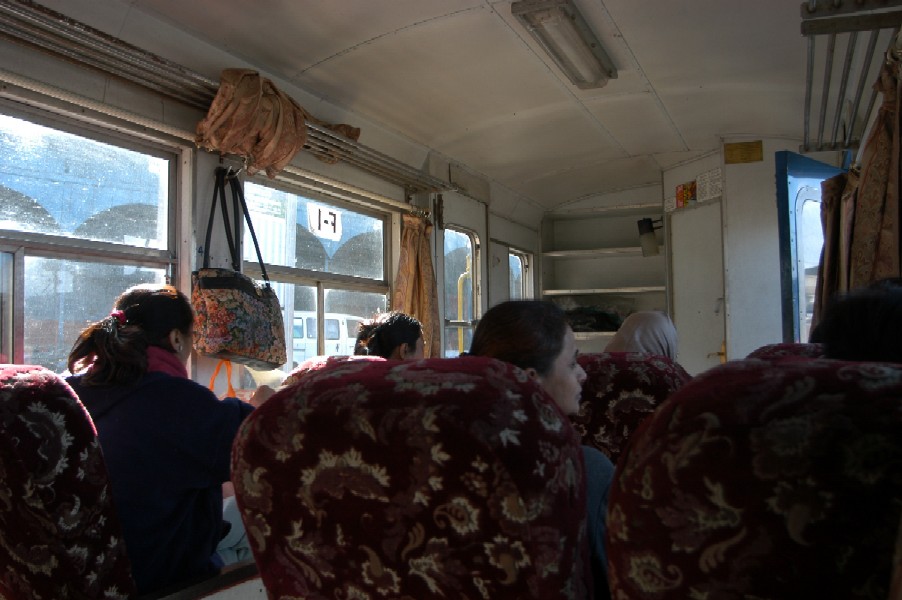
It was a modest complex but full of life. Kids were playing games in the dirt courtyard when we entered. We started our visit in the gift shop but were a bit disappointed in the selection of things for sale. According to our guidebook the center was supposed to only sell items that were made there but clearly they were expanding. There were a number of hand woven blankets for sale and a selection of carpets but the waiting list to have a carpet made was months long. I bought a wool blanket and asked to use their toilet before we walked around to look at some of the artisans at work. A whole floor of one building was filled with women working diligently on the carpet weaving, turning out some beautiful carpet designs from memory. In spite of the steady flow of tourist they were very welcoming and even happy to pose for photos. Rooms around the complex showed the entire range of carpet making activities from processing the wool to coloring the yarn but not all of the areas were being worked. They did have a shop that sold yarn and showed what natural ingredients were used to create the various colors, including indigo plant, rhubard root, tea leaves. In other parts of the complex they had wood carving, furniture making, and painting going on but on a much smaller scale. Unfortunately we didn't see any of these 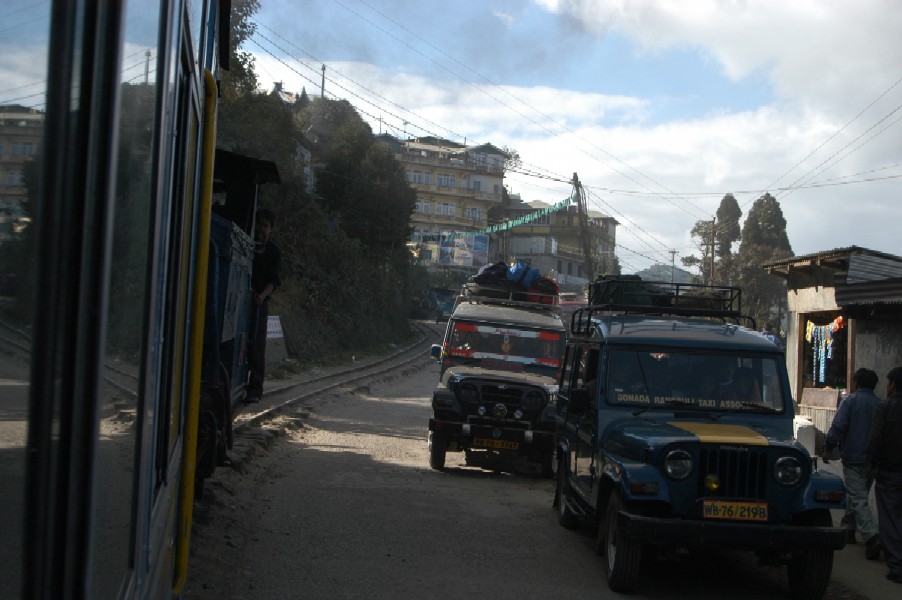 items for sale in the gift shop. When we peeked into one small shop we were met with the faces of a couple of older women. They patiently watched us poke around before one pulled out some coins. One was an American coin and from her gestures we gathered that she wanted to exchange the coins for rupees so we exchanged what we could. items for sale in the gift shop. When we peeked into one small shop we were met with the faces of a couple of older women. They patiently watched us poke around before one pulled out some coins. One was an American coin and from her gestures we gathered that she wanted to exchange the coins for rupees so we exchanged what we could.
Before leaving the center we paid one final visit to the gift shop and bought some Tibetan incense (not made at the center) to take home. The walk back up to the ridge was slow going but probably the best exercise we'd had in weeks. |

